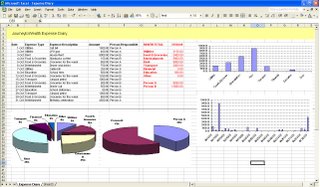Plan to Bring Your Debt to Manageable Levels
-----------------------------------------
Series: Beginning Investing (6th post)
Section: Before You Invest
-----------------------------------------
So far you have accomplished two important things - you've set your goals and also determined the amount of money you can save / invest every month in order to achieve them.
It is time now to start doing the preparatory work towards creating a sound financial plan. This section, 'Before You Invest', will consist of three posts:
- Bringing your debt to manageable levels
- Insurance
- Setting aside a emergency cash
Today we'll be talking about the first of these.
Good and Bad Debt
Most of us have debt of some sort: car loans, personal loans, home loans / mortgages, credit card outstandings or just money we've borrowed from friends and family. This is in itself not such a bad thing. After all, loans serve the important pupose of letting us buy into things today that we could otherwise never afford.
The trick, however, is to distinguish 'good' debt from 'bad', a concept that I first read about years ago in the book 'Rich Dad, Poor Dad' and which has stuck with me ever since. Essentially, any debt you take on towards buying an appreciating asset (something that increases in value over time) is 'good' and any debt you take on to purchase depreciating assets (like cars, appliances etc.) or consumables is 'bad'. The idea here is to minimize bad debt and increase the amount of good debt in your portfolio.
Note that I am not talking about eliminating bad debt completely, which is probably impossible in real life. Everyone would like to buy a car or a nice TV or refrigerator and it's rather difficult to do these without taking a loan of some kind. Just understand bad debt for what it is - a drain on your savings - and work out ways to reduce this by postponing your purchase or perhaps settling for something a little less expensive.
The balance to strike here is between your current lifestyle and your future and it is up to you how much you sacrifice now so you can enjoy later. Just be aware that the more you live it up today, the less you will have for tomorrow.
'Good' debt, on the other hand, is a pretty neat thing to get into. You purchase an asset at a price locked in on the date of purchase and reap the benefits of all the profit the asset makes you over time.
How Much Debt Should You Have?
In general, most banks will not allow you to borrow any amount for which the total of your monthly instalments across all your loans will exceed more than half of your income. Most people stretch this even further by taking loans from different banks and not declaring their outstanding loans elsewhere. This is definitely too high for comfort and will leave you in a desperate position in case you were to lose your income for some reason.
I'd suggest perhaps 30% as the limit, and this includes all your debt, including any amount you are rolling over on your credit cards.
How Should You Reduce Your Debt?
Start by listing all your loans under the 'good' and 'bad' categories and, for each loan, list the annual interest rate you are paying. For credit cards, this would typically be about 40% (@ 3% per month interest), which makes it the most expensive loan you could take!
Based on the monthly savings you have already calculated, plan on pre-terminating the more expensive (higher interest) 'bad' loans. Focus on this first rather than on investing your money as this will also significantly increase your savings potential as your interest payments go down.
Further, explore the option of taking on lower cost loans to pay off higher cost loans e.g. taking a personal loan at 18-20% to pay off your card outstandings (which are at about 40%), transferring your card balance to another card to avail of balance transfer incentives, taking a top-up loan on your property (at about 9-11%) to pay off your car etc.
Especially on the subject of credit cards, if you have multiple cards with outstandings on each, plan on paying them off in the following manner:
- Pay the minimum due on all cards except the one where you have the highest interest. If all cards have equal interest, then choose the one which has the highest outstanding
- For this card, use your spare funds to pay off as much as you can
- Do this every month till you have paid off the first card. Then cancel the card
- Move your focus on the next highest interest or outstanding balance card, paying off as much as possible on this while maintaining the minimum due on the others
- Continue till you have paid off all cards. Retain only one or two cards at a maximum
Have a Plan and Stick to It
Based on the above, create a 'debt-reduction' plan and stick to it, trying to minimize or eliminate 'bad' debt over time, thereby creating a larger monthly savings base with which to start investing once your debt is down to manageable levels.
Next Post on Beginning Investing: Insure Yourself and Your Property





